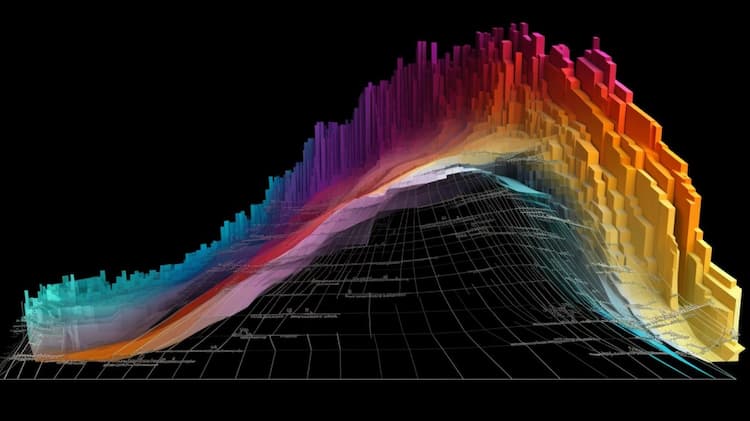
What is the TMF ETF | TMF Stock
In the world of finance, understanding different financial instruments and investment opportunities is crucial for making informed decisions. One such investment vehicle is the TMF ETF, which stands for the Direxion Daily 20+ Year Treasury Bull 3X Shares ETF. In this article, we will delve into the details of this ETF, exploring its features, underlying assets, benefits, and considerations before investing.
TMF ETF: Overview
The TMF ETF is a financial instrument that has gained popularity among investors looking for exposure to a specific market segment. ETF stands for Exchange-Traded Fund, which is a type of investment fund traded on stock exchanges, similar to individual stocks. The TMF ETF focuses on stock market, making it an attractive option for investors with an interest in this particular area.
TMF ETF: Underlying and Exposure: What Does It Track and How?
The Index is a market value weighted index that includes publicly issued U.S. Treasury securities that have a remaining maturity of greater than 20 years. Eligible securities must be fixed rate, denominated in U.S. dollars, and have $300 million or more of outstanding face value, excluding amounts held by the Federal Reserve. Securities excluded from the Index are inflation-linked securities, Treasury bills, cash management bills, any government agency debt issued with or without a government guarantee and zero-coupon issues that have been stripped from coupon-paying bonds. The Index is not adjusted for securities that may become eligible or ineligible for inclusion in the Index intra-month. The Index is reconstituted and rebalanced on the last business day of each month.As of December 30, 2022, the Index was comprised of 40 constituents.The Fund, under normal circumstances, invests at least 80% of its net assets (plus borrowing for investment purposes) in financial instruments, such as swap agreements, securities of the Index, and exchange-traded funds ("ETFs") that track the Index and other financial instruments that provide daily leveraged exposure to the Index or to ETFs that track the Index, which, in combination, provide returns consistent with the Fund’s investment objective. The financial instruments in which the Fund most commonly invests are swap agreements and futures contracts which are intended to produce economically leveraged investment results.The Fund may invest in the securities of the Index, a representative sample of the securities in the Index that has aggregate characteristics similar to those of the Index, an ETF that tracks the Index or a substantially similar index, and may utilize derivatives, such as swaps or futures on the Index or on an ETF that tracks the same Index or a substantially similar index, that provide leveraged exposure to the above. The Fund seeks to remain fully invested at all times, consistent with its stated investment objective, but may not always have investment exposure to all of the securities in the Index, or its weighting of investment exposure to securities or industries may be different from that of the Index. In addition, the Fund may invest directly or indirectly in securities not included in the Index. In all cases, the investments would be designed to help the Fund track the Index.The Fund will attempt to achieve its investment objective without regard to overall market movement or the increase or decrease of the value of the securities in the Index. At the close of the markets each trading day, Rafferty rebalances the Fund’s portfolio so that its exposure to the Index is consistent with the Fund’s investment objective. The impact of the Index’s movements during the day will affect whether the Fund’s portfolio needs to be re-positioned. For example, if the Index has risen on a given day, net assets of the Fund should rise, meaning that the Fund’s exposure will need to be increased. Conversely, if the Index has fallen on a given day, net assets of the Fund should fall, meaning the Fund’s exposure will need to be reduced. This re-positioning strategy typically results in high portfolio turnover. On a day-to-day basis, the Fund is expected to hold ETFs and money market funds, deposit accounts with institutions with high quality credit ratings, and/or short-term debt instruments that have terms-to-maturity of less than 397 days and exhibit high quality credit profiles, including U.S. government securities and repurchase agreements. The Fund may lend securities representing up to one-third of the value of the Fund’s total assets (excluding the value of the collateral received).The terms “daily,” “day,” and “trading day,” refer to the period from the close of the markets on one trading day to the close of the markets on the next trading day. The Fund is “non-diversified,” meaning that a relatively high percentage of its assets may be invested in a limited number of issuers of securities. Additionally, the Fund’s investment objective is not a fundamental policy and may be changed by the Fund’s Board of Trustees without shareholder approval. Because of daily rebalancing and the compounding of each day’s return over time, the return of the Fund for periods longer than a single day will be the result of each day’s returns compounded over the period, which will very likely differ from 300% of the return of the Index over the same period. The Fund will lose money if the Index performance is flat over time, and as a result of daily rebalancing, the Index’s volatility and the effects of compounding, it is even possible that the Fund will lose money over time while the Index’s performance increases over a period longer than a single day.
 TMF overlap What is the TMF ETF ?
TMF overlap What is the TMF ETF ?
TMF ETF: Benefits of Investing in This ETF
Investing in the TMF ETF offers several advantages for investors. Firstly, as an ETF, it provides diversification benefits, spreading the investment across multiple assets, reducing the impact of individual asset price movements. Moreover, the TMF ETF market has shown promising potential for growth, and investing in this ETF can be an opportunity to capitalize on that growth. Additionally, the ETF's intraday tradability on stock exchanges allows investors to buy and sell shares throughout the trading day at market prices, providing flexibility and liquidity.
TMF ETF: Considerations Before Investing
While the TMF ETF presents enticing opportunities, potential investors must also consider certain factors before making a decision. One crucial aspect is understanding the inherent risks associated with the stock market. Market fluctuations, economic conditions, and other factors can impact the performance of the ETF. Additionally, investors should carefully evaluate the expense ratio and management fees of the ETF to ensure it aligns with their investment goals.
CONCLUSION:
In conclusion, the TMF ETF offers investors an opportunity to gain exposure to the stock market segment through a diversified and tradable investment vehicle. However, it's essential to conduct thorough research, assess risk factors, and align the investment with one's financial objectives. Remember, this article does not provide any investment advisory services.
Disclaimer: This article is for informational purposes only and does not constitute investment advice. It is essential to consult with a qualified financial advisor before making any investment decisions.
Sources:
TMF ETF issuer
TMF ETF official page
TMF quote and analysis
Discover the top holdings, correlations, and overlaps of ETFs using our visualization tool.
Our app allows you to build and track your portfolio.
To learn more about the TMF Direxion Daily 20+ Year Treasury Bull 3X Shares, access our dedicated page now.
FAQ
What is the TMF ETF?
The TMF ETF, also known as the Direxion Daily 20+ Year Treasury Bull 3x Shares, is an exchange-traded fund that aims to provide triple daily exposure to the performance of long-term U.S. Treasury bonds.
How does the TMF ETF achieve its objective?
The TMF ETF achieves its objective by using financial derivatives, such as futures contracts and swaps, to amplify the returns of its underlying index, which consists of U.S. Treasury bonds with maturities of 20 years or more.
What are the risks associated with investing in the TMF ETF?
The TMF ETF's strategy of seeking triple daily returns involves higher levels of leverage, making it a high-risk investment. While it can magnify gains in a rising market, it can also lead to significant losses in a declining market.
What factors can influence the performance of the TMF ETF?
The performance of the TMF ETF is primarily influenced by changes in the prices of long-term U.S. Treasury bonds, which, in turn, can be affected by interest rates, economic conditions, inflation expectations, and monetary policy decisions.
Who might be interested in investing in the TMF ETF?
The TMF ETF is typically suitable for sophisticated and risk-tolerant investors who have a strong belief in the direction of long-term U.S. Treasury bonds and want to capitalize on short-term price movements through leveraged exposure.





